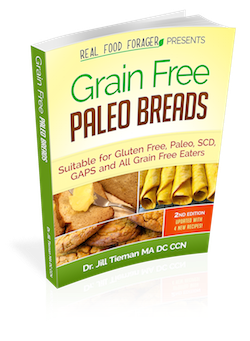Biofilms begin with individual bacteria. When conditions are favorable, they start forming communities by adhering to a surface. This surface could be liquid (as in pond) or solid. Examples of biofilms are plaque on teeth or the slimmy stuff in your drain. Whether we like it or not, they are all around us and within us.
Biofilms accumulate in places where we do not want them, such as on medical equipment where they can cause infections or in our gut where they can cause dysbiosis. As a biofilm community, they have strength in numbers and can be difficult to eradicate.
They communicate with each other using quorom sensing. This switches on genes that aids in the building of the biofilm structure where they become attached. It also switches off genes that may have allowed them to move around which they no longer need to do once they are in a community.
Biofilms are sentient in that they are able to perceive the nutritional and stress status of the host they are residing in. Bifido bacteria are very important to human health. Healthy bifido populations are associated with good human health. However, stress (of any kind like loud noises, crowding, or more chronic stress, etc.) may cause bifido in biofilms to die off.
This can allow a pathogen to get in and make a person sick (if they are stressed).
Any surface in the body will have biofilms and any medical device can become infected with pathogens, such as heart valves, hip joints, etc. It is very difficult to cure this with antibiotics alone because the bacteria are in biofilms. In the case of an implant – it usually has to be removed.
Sometimes this can cause an immune response to the biofilm community that makes the person sick, rather than having an actual overgrowth. For instance candida is in biofilms which makes it very difficult to eradicate.
Candida is a Biofilm
Yeast Syndrome is associated with having systemic symptoms that are otherwise unexplained, such as, fatigue, low grad fevers, GI distress, etc. This can respond to diet and anti-fungals as described in William Crook’s The Yeast Connection, published in 1982.
This became described as systemic yeast overgrowth. However, back in the 1970’s and 1980’s and even today, conventional doctors don’t treat this because they only look at frank yeast overgrowth such as vaginal infections and thrush.
Candida has an elaborate cell wall structure and at least 178 antigens that humans respond to. We all should respond to these antigens. However, some people overreact and it becomes an immune, pro-inflammatory reaction.
Candida forms biofilms and these have been very well documented in the mouth and vagina – the gut is harder to document. There is no test for candida, but a tip off is when the problem is chronic or recurrent. If it keeps coming back that means that you may be reducing the populations, but you cannot totally eradicate them.
Additionally, most sinus infections are yeast. Antibiotics will not work and frankly make them worse. Here again, (along with chronic middle ear infections), you need to take something that breaks up the biofilm along with things that will kill the candida that makes up the biofilm. This is the main concept with any biofilm.
The missing piece in recurrent problems may be that the biofilm component has not been addressed.
Use Serratia Peptidase to Break Up Biofilms
Serratia peptidase is a proteolytic enzyme that breaks up biofilms of any kind. It is very well absorbed and it will have an effect wherever it is needed. This is taken away from food as it is not intended to help digestion.
Serratia peptidase is made by bacteria that inhabit the guts of silkworms and allows the worms to break up the cocoon. Interesting huh?
Additionally, this enzyme does not appear to have any adverse effect on healthy biofilms such as lacto and bifido bacteria. A biofilm is not in and of itself dangerous – it’s what organism is living there that can be the problem.
Protocol for Biofilms in the Gut
The main treatment concept is that you need to force a part of the biofilm to open – sort of like opening up a door – in order to allow therapeutic supplements or pharmaceuticals into the community to kill them.
This method was developed by a company developing a way of dissolving biofilms around medical catheters.
- Use anti-microbials such as oil of oregano, berberine and garlic to name just a few.
- For candida use goldenseal tincture, caprylic acid, garlic, oil of oregano, Pau d’ Arco, etc.
- Use the enzyme Serratia peptidase to disrupt the biofilm.
- Use probiotics and prebiotics. Probiotics are live organisms, prebiotics are substances (usually polysaccharides in fiber) that we cannot digest, but they feed the healthy bacteria. Prebiotics are great way to get populations of bacteria up that are not available as probiotics but have significant health benefits to humans. Diversity is important.
- Slowly start to incorporate fermented foods as they can also help to break up the biofilms.
Candida Requires a Three Month Course of Treatment
Candida cells are persistent and metabolically dormant and so the treatment takes a long time.
Start with very small amounts of the enzyme and increase the dose every week to minimize die-off. The enzymes also have EDTA form which is a chelating agent and is more powerful.
The second month use the EDTA form of the enzyme and take along with anti-microbials. With meals take probiotics and prebiotics. Here again, start slow and work with a knowledgeable provider.
Use a high potency, multi-species probiotic. There is some different thinking about whether or not to use multi species or single species. People who are in favor of single species (ex. lacto bacillus rhamnosus) are relying on the studies of a patented strain. Once the strain is patented, it can be marketed as such and thus it is easier to get more studies about that particular strain. However, other strains can be just as effective, though they may not have been studied and published in the literature.
Along with these treatment options, following the candida diet is really important as well.
When you are using a chelating agent such as EDTA, remember that you will lose minerals, so you will need to supplement.
Other pathogens may be treated with this protocol. Some require shorter periods of treatment.
Do not start any new supplements, protocol or diet until you speak with a knowledgeable health care provider. See more of my disclaimer here.
Source of part of this article, and the protocol comes from the interview with Dr. Stephen Olmstead at the Healthy Gut Summit. I found this interview really fascinating and full of helpful information!
You can still order The Healthy Gut Summit Here or contact Dr. Olmstead at [email protected]











